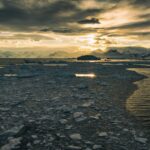Drones are setting their sights on wildlife
By Kate Baggaley | February 10, 2017
It’s summer in Antarctica right now, which means temperatures along the coastline are hovering around freezing. David Johnston, a marine biologist at Duke University, and his colleagues have been taking advantage of this balmy weather. Over the past several weeks, they have sent fixed wing and multicopter drones soaring over the shoreline and coastal seas.
“The key thing is to keep the batteries warm before we put them into the drone,” Johnston says. “We use typical hand warmers that you would use when you go skiing.”
The intrepid drones have been spying on penguin colonies and humpback whales. To learn about wild animals, biologists have traditionally flown small planes or helicopters overhead, poured over satellite pictures, or approached on foot. But Johnston and other scientists are increasingly turning to drones to see if they can’t get the job done better and more quickly. “Drones can offer a very safe, green, and inexpensive alternative to manned aircraft,” says David Bird, an emeritus professor of wildlife biology at McGill University in Montreal.
Full article at Popular Science



 This site was developed with the support of the National Science Foundation under Grant No. OPP-2224611 and OPP-2026045. Any opinions, findings, and conclusions or recommendations expressed in this material are those of the authors and do not necessarily reflect the views of the National Science Foundation.
This site was developed with the support of the National Science Foundation under Grant No. OPP-2224611 and OPP-2026045. Any opinions, findings, and conclusions or recommendations expressed in this material are those of the authors and do not necessarily reflect the views of the National Science Foundation.